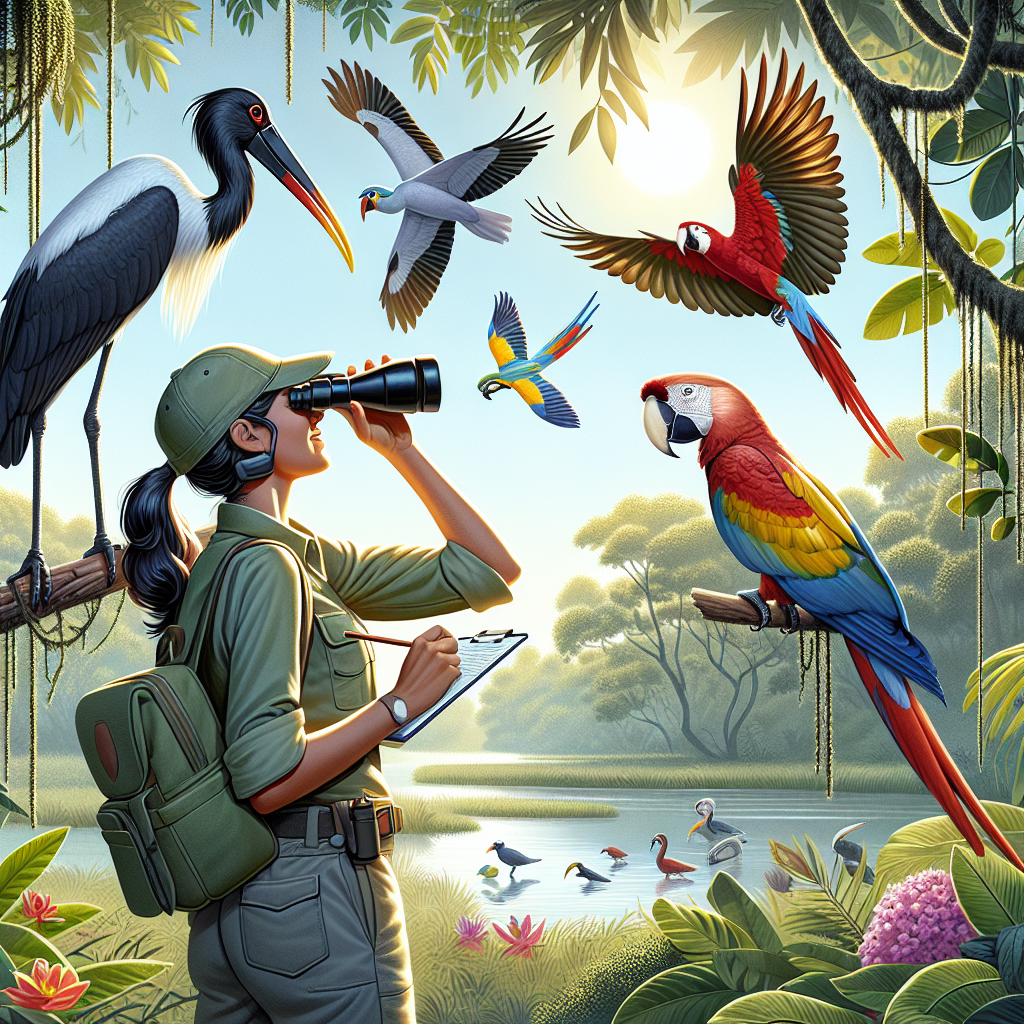Wings of Wonder: Exploring the Diversity of Avian Species Around the Globe

Birds have always captivated the human imagination with their intricate beauty, melodious songs, and astonishing behaviors. With over 10,000 recognized species, avian diversity is one of the most remarkable aspects of our planet’s wildlife, and understanding this diversity is crucial not only for our ecological interests but also for our appreciation of nature itself. From the iridescent feathers of hummingbirds to the vast wingspans of albatrosses, the world of avian species is rich and varied, offering endless opportunities for exploration and discovery.
The Spectrum of Colors: Feather Patterns and Colors
One of the first aspects of bird diversity that captures our attention is color. The avian realm showcases an extraordinary spectrum of colors, often far beyond what we see in other types of animals. This vivid palette serves various functions, from attracting mates to camouflaging against predators. For instance, the male peacock’s extravagant tail feathers, adorned with iridescent eyespots, are a classic example of sexual selection at work. In contrast, species like the American woodcock rely on their cryptic plumage to blend seamlessly into their earthy surroundings, making them elusive to both predators and human observers.
Bird coloration is influenced by genetics, diet, and environmental factors. The vibrant reds, blues, and yellows found in species like the African grey parrot or the scarlet macaw are often the result of pigments obtained from their diet, while structural coloration in species like the blue jay arises from the microscopic structure of their feathers, which refracts light in unique ways.
Masters of Flight: Adaptations for Different Environments
Birds have evolved a myriad of adaptations to thrive in their respective environments—each species is a testament to the principles of evolution and natural selection. From the tiny, agile hummingbird flitting among flowers to the massive ostrich sprinting across the African savanna, their adaptations are as diverse as their habitats.
Forest-dwelling species like the resplendent quetzal showcase remarkable camouflage and agile flight, enabling them to navigate the dense foliage. In contrast, seabirds such as the wandering albatross are built for long-distance travel over open water, equipped with massive wings that allow them to glide effortlessly on ocean winds. Meanwhile, birds adapted to arid climates, such as the roadrunner, exhibit behaviors and physical traits that allow them to conserve water and survive in harsh conditions.
Vocal Heralds: The Language of Birds
The auditory diversity of avian species is equally captivating. Birds communicate using a stunning array of sounds, from the complex songs of melodious thrushes to the sharp calls of raptors. Vocalizations serve crucial functions including mate attraction, territory establishment, and signaling alarm.
Some species, such as lyrebirds, are renowned for their ability to mimic other sounds, adding an additional layer of complexity to their communication. These vocal adaptations not only enhance their own survival but also contribute to the intricate tapestry of soundscapes found in ecosystems worldwide. Birdsong often marks the dawn chorus, a symphony that awakens the natural world, drawing our attention to the beauty of avian life.
The Role of Birds in Ecosystems
Birds play irreplaceable roles in ecosystems, contributing to a variety of ecological processes. As pollinators, seed dispersers, and pest controllers, their presence is crucial for the health and functioning of our planet’s ecosystems. For example, the kea, a large parrot native to New Zealand, is known for its intelligence and problem-solving abilities, allowing it to exploit a wide range of food sources, including insects and fruits.
In contrast, birds of prey, such as eagles and hawks, are essential for controlling rodent populations. The balance created by these avian species is vital for maintaining biodiversity and ensuring the resilience of ecosystems. Moreover, urban environments have also adapted to include various bird species, creating new dynamics in ecosystem interactions.
Conservation Challenges
Despite their wondrous diversity, avian species face significant threats globally, including habitat loss, climate change, and pollution. According to the International Union for Conservation of Nature (IUCN), approximately 13% of bird species are classified as threatened. Protecting these species requires concerted efforts at local, national, and global levels.
Organizations and conservationists are working tirelessly to safeguard habitats, restore ecosystems, and engage communities in bird conservation efforts. Birdwatching, citizen science projects, and ecotourism also foster a greater appreciation for avian diversity, encouraging people worldwide to connect with and protect these extraordinary creatures.
Conclusion
The world of birds is a mesmerizing tapestry of color, sound, and behavior that offers endless avenues for exploration and understanding. From their intricate feather patterns and vocal prowess to their vital roles in ecosystems, birds showcase the awe-inspiring diversity of life on Earth. As we continue to learn about and appreciate these remarkable creatures, we must also commit to their conservation, ensuring that future generations can revel in the wonders of avian diversity. In the words of naturalist Roger Tory Peterson, "Birds are a link between the worlds of nature and the world of human beings," reminding us of the profound connections we share with the natural world.